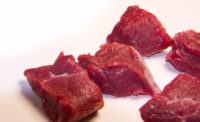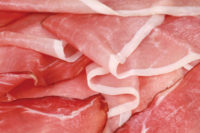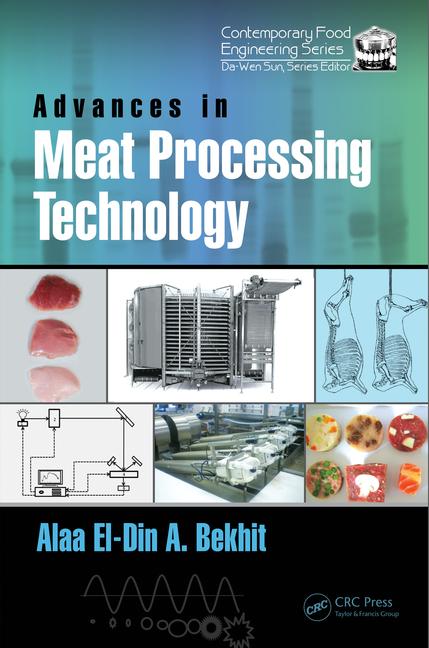Slicers sharpen up








Slicers are inherently dangerous to employees, so it’s no wonder processors are reviewing new technologies that will automate sanitation and cutting procedures.
Enhanced scanning technology is the latest innovation to be used by deli processors, specifically for random shape products such as whole-muscle roast beef or turkey breast. Innovations to control weight help ensure customers receive what they pay for, while reducing plant give-aways.
“The technology was first introduced into the cheese industry to portion control the slicing of Swiss cheese and was quickly adopted by the protein industry, providing exact weight portion control,” says Gerald Lessard, vice president and COO for West Liberty Foods, based in West Liberty, Iowa.
Slicing equipment has also become larger, enabling increased throughput, he says.
“Knife [blade] design continues to improve, providing the ability to match a specific product to a specific blade type,” Lessard adds.
Also, automatic blade honing ensures blades are top notch without over-sharpening and reducing the life of the blade.
“Smart sharpeners keep track of blades through RFID [radio-frequency identification] technology, making the process simple for employees,” says Matt Giroux, corporate project manager at Butterball LLC, based in Garner, N.C.
Designed for sanitation
In addition to the typical equipment needs of the meat industry — robust, efficient, ergonomic and faster than its predecessor — deli slicers must be designed for easy sanitation, Giroux says.
“The [North American Meat Institute] principles of sanitary design are a great base from which to start, but processors must really dig into the details when evaluating new slicers for ready-to-eat applications,” says Giroux. “Many vendors boast of superior sanitary design, but it takes an expert processing team made up of experienced operations, maintenance, quality, sanitation and engineering personnel to determine which design is superior for their specific application.”
The open architecture of new slicers has certainly improved their cleanability and, consequently, food safety, notes Lessard.
“Enhancements in sanitary design continue to be advanced with each generation of slicer, providing additional ease of cleaning and a higher level of food safety,” Lessard says. “Our primary focus in selecting a slicer is understanding the specific application and ensuring that food safety is built into the equipment.”
Enhanced ergonomics
Automation of the slicer loading process provides an ergonomic advantage over older slicers, Lessard says.
“Enhancement in gripper design and automated gripping of the log have continued to enhance employee safety,” he says. “We work closely with the OEM [original equipment manufacturer] and our own training department to develop machine-specific training for the operator.”
Automation is also increasing in loading and unloading slicers, says Jeff Sindelar, Ph.D., associate professor in the department of animal science, University of Wisconsin, Madison.
“So, there are less people involved in handling, which increases the efficiency and food safety due to a lowered risk of cross-contamination,” he says.
Log loading and ergonomics are still an area for improvement relative to the slicer OEMs, notes Giroux.
“There are third-party fabricators that have solutions, but with the different equipment suppliers providing equipment for the processing line, the constancy of maintenance parts, sanitation methods and operations, this can add complexity,” Giroux says.
While automation can enhance ergonomics, processors need to remain vigilant about how it will actually impact the ability to efficiently sanitize equipment, he says.
“In some cases, an acceptable balance of ergonomics and food safety may result in less automation,” Giroux says. “Anything slicer OEMs can add to assist in ergonomics while keeping the equipment simple to clean is beneficial.”
Processors are increasingly taking advantage of robotic systems or units that are integrated into their slicing systems, says Sindelar, which should only continue to grow with new equipment installations.
“We do expect to look into robotics in the near future for palletizing and boxing,” says Mark Hiegel, Cooper Farms’ cooked meats plant manager, based in Oakwood, Ohio. “Ergonomics is always a top concern for us — so, easing repetitive motions. We are currently using CIP [clean in place] systems in our slicing rooms.”
Streamlined sanitation
In fact, a simple and open equipment design with good accessibility to clean every surface is crucial, which can be even more useful than CIP systems, notes Giroux.
“Steam application is great for the micro kill, but very hard on the electronics and complicated sensors required to run modern slicers at speed, while optimizing yield and weight control,” Giroux says. “If product contact areas could be effectively isolated from a thermal standpoint from electronics, steam CIP systems would be more beneficial.”
Combining effective sanitation methods with efficient operations is critical. But slicers are notoriously sensitive, so they have more challenges than other machinery in terms of sanitation, notes Sindelar.
“Food safety is a top priority at Butterball, so sanitation must take precedence over the cost of components and downtime,” Giroux says. “However, it is critical to keep slicers running at their best in today’s competitive processing plants, so every stride slicer OEMs make to improve sanitation while maintaining up-time is a move in the right direction.”
Wes Osburn, an associate professor in the department of animal science at Texas A&M University, in College Station, Texas, says most slicer manufacturers are aware of this dilemma and are working to streamline the maintenance needed “to reduce the number of moving parts and minimize or eliminate the need for tools to reduce the time required for changeovers.”
They are also examining how to redesign slicing equipment to increase the ease of cleaning and sanitation, he says.
“Developing new technology to increase the strength of slicer blades, while maintaining blade sharpness to increase the life of the blade, this reduces changeovers and lowers equipment maintenance costs,” Osburn says.
Sindelar agrees that more work needs to be done to improve slicing blade technology, such as understanding the right angles to position the blades, materials that could maximize or improve the lifespan of the blade and quantifying how many times blades really need to be sharpened.
“Advances in software are used to control the slicing function, and this is fine-tuned and continually adjusted for improvements,” Sindelar says.
Looking for a reprint of this article?
From high-res PDFs to custom plaques, order your copy today!














